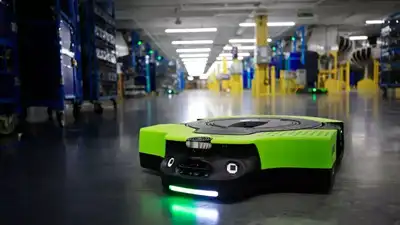In a major technological and logistical breakthrough, Amazon has officially become the world’s largest manufacturer and operator of delivery drones, marking a significant milestone in the evolution of modern commerce. The company’s aggressive expansion into drone-based delivery systems has redefined last-mile logistics, boosting its global influence in both retail and aviation technology sectors.
The news follows decades of continuous development via Amazon Prime Air, the tech industry giant’s special drone delivery team. With thousands of active drones and an extensively automated production line, Amazon now dominates all other commercial drone operators and makers around the world.
This feat is a testament to Amazon’s vision long-term to transform product delivery with quicker, greener, and self-servicing solutions. It has been pouring significant investments in artificial intelligence, robotics, and aeronautics in order to make its drones more advanced. Consequently, its drones can now deliver packages weighing under five pounds in less than 30 minutes — a timeframe once deemed science fiction.
Amazon’s latest high-tech drone production plants are now producing drones on unprecedented levels. The unmanned aerial vehicles are constructed of light, yet rugged materials, and are equipped with sophisticated navigation and obstacle-avoidance technology. The entire fleet is powered by electricity, matching Amazon’s overall goal to reach net-zero carbon emissions by 2040.
Today, Amazon’s drone deliveries are active in some parts of Texas and California in the U.S., with expansion into Europe and Asia in the offing. The drones mainly deliver consumer goods, pharmaceuticals, and other urgent supplies, particularly where access to conventional delivery channels is limited.
Amazon CEO Andy Jassy issued a statement on the development, referring to it as “a defining moment in Amazon’s mission to improve global logistics through innovation.” He added that the scale and efficiency of Amazon’s drone program will “dramatically reshape customer expectations for speed, convenience, and sustainability.”
Though the technological success, Amazon’s drone initiative has not been problem-free. Regulatory challenges, weather reliance, and airspace security and privacy concerns have been hurdling them. Nevertheless, the company has cooperated closely with aviation regulators, such as the Federal Aviation Administration (FAA), for exact compliance with safety standards.
Industry insiders think Amazon’s leadership in drone construction and operation may establish the new model for international e-commerce logistics. Walmart, Google Wing, and UPS are all following similar paths, but none have achieved Amazon’s level of scale or integration through supply chains.
As the firm refines its drone technology and coverage areas, the future of delivery is soaring high — and Amazon is at the helm.
In a major technological and logistical breakthrough, Amazon has officially become the world’s largest manufacturer and operator of delivery drones, marking a significant milestone in the evolution of modern commerce. The company’s aggressive expansion into drone-based delivery systems has redefined last-mile logistics, boosting its global influence in both retail and aviation technology sectors.
The news follows decades of continuous development via Amazon Prime Air, the tech industry giant’s special drone delivery team. With thousands of active drones and an extensively automated production line, Amazon now dominates all other commercial drone operators and makers around the world.
This feat is a testament to Amazon’s vision long-term to transform product delivery with quicker, greener, and self-servicing solutions. It has been pouring significant investments in artificial intelligence, robotics, and aeronautics in order to make its drones more advanced. Consequently, its drones can now deliver packages weighing under five pounds in less than 30 minutes — a timeframe once deemed science fiction.
Amazon’s latest high-tech drone production plants are now producing drones on unprecedented levels. The unmanned aerial vehicles are constructed of light, yet rugged materials, and are equipped with sophisticated navigation and obstacle-avoidance technology. The entire fleet is powered by electricity, matching Amazon’s overall goal to reach net-zero carbon emissions by 2040.
Today, Amazon’s drone deliveries are active in some parts of Texas and California in the U.S., with expansion into Europe and Asia in the offing. The drones mainly deliver consumer goods, pharmaceuticals, and other urgent supplies, particularly where access to conventional delivery channels is limited.
Amazon CEO Andy Jassy issued a statement on the development, referring to it as “a defining moment in Amazon’s mission to improve global logistics through innovation.” He added that the scale and efficiency of Amazon’s drone program will “dramatically reshape customer expectations for speed, convenience, and sustainability.”
Though the technological success, Amazon’s drone initiative has not been problem-free. Regulatory challenges, weather reliance, and airspace security and privacy concerns have been hurdling them. Nevertheless, the company has cooperated closely with aviation regulators, such as the Federal Aviation Administration (FAA), for exact compliance with safety standards.
Industry insiders think Amazon’s leadership in drone construction and operation may establish the new model for international e-commerce logistics. Walmart, Google Wing, and UPS are all following similar paths, but none have achieved Amazon’s level of scale or integration through supply chains.
As the firm refines its drone technology and coverage areas, the future of delivery is soaring high — and Amazon is at the helm.









